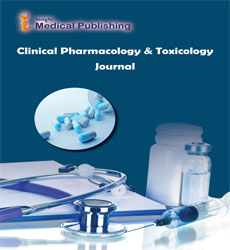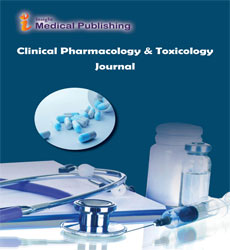An overview on Absorption of Pharmacokinetic Interactions
Jian-Sheng Li*
Academy of Chinese Medical Sciences, Henan University of Chinese Medicine, Zhengzhou, China
- *Corresponding Author:
- Jian-Sheng Li Academy of Chinese Medical Sciences, Henan University of Chinese Medicine, Zhengzhou, China, Email: li_js8@163.com
Received : December 01, 2021; Accepted : December 15, 2021; Published : December 22, 2021
Citation: Jian-Sheng Li (2021) An overview on Absorption of Pharmacokinetic Interactions. Clin Phar Toxi Jour. Vol.5 No.3.4.
Drug side effects are brought about by differences in the dosage, transport, distribution, digestion, or release of some of the comparative drugs and the general behavior of each drug if taken alone. This progression is a fundamental change in drug collection. In this regard, two drugs can be homergic as long as they have the same effect on a living person and heterergic thinks their properties are different.
Changes in motility: Some drugs, for example, prokinetic specialists, accelerate the process of digestion. In cases where the drug is found in the suction area of the intestinal system for a short time its concentration in the blood will decrease. The opposite will happen with drugs that lower digestive motility.
PH: Drugs can be obtained with ionized or non-ionized structure, depending on their pKa (pH where the drug reaches a balance between its ionized and non-ionized form). Non-ionized types of drugs are usually easier to immerse because they will not be irritated by the lipidic bilayer of the cell, most of which can be consumed by uninvolved dispersion, unless they are very large or extremely strong (such as glucose or vancomycin), which may or may not contain transparent substances. And abnormalities circulating throughout the digestive tract, which transmits the drug within the body. Increasingly increasing the storage of a drug will increase its bioavailability, therefore, changing the form of the drug between ionized or not, may be valuable or not really for certain drugs.
Some drugs require a decomposing stomach pH to be maintained. Some require an important pH for digestive tract. Any change in pH can change this import. Due to acid neutralizers, elevated pH can suppress the absorption of various drugs such as zalcitabine (storage can be reduced by 25%), tipranavir (25%) and amprenavir (up to 35%). However, this occurs more slowly than the pH increase causes an increase in retention. For example, it occurs when cimetidine is taken with didanosine. In this case, a twoto four-hour interval between taking these two drugs is usually sufficient to distance itself from the organization.
• Drug solvency: The similarity of certain drugs can be greatly reduced if we consider them to be treated with a high-fat diet.
This is the state of oral anticoagulants and avocado.
• Development of portable buildings:
• Protein restriction. A few drugs, for example, sucralfate binds to proteins, especially considering they have high bioavailability. Its organization is therefore contraindicated in enteral care.
• Finally, another opportunity is for the drug to be trapped in the digestive tract and stop large structures that interfere with its introduction. This can happen with cholestyramine which is thought to be related to sulfamethoxazol, thyroxin, warfarin or digoxin.
• Tracking of enterocytes' P-glycoprotein: This has all the hallmarks of being one of the nutrients developed by the use of grapefruit juice in increasing the bioavailability of various drugs, regardless of what has been shown to inhibit its initial digestion.

Open Access Journals
- Aquaculture & Veterinary Science
- Chemistry & Chemical Sciences
- Clinical Sciences
- Engineering
- General Science
- Genetics & Molecular Biology
- Health Care & Nursing
- Immunology & Microbiology
- Materials Science
- Mathematics & Physics
- Medical Sciences
- Neurology & Psychiatry
- Oncology & Cancer Science
- Pharmaceutical Sciences
